From the History of Iron and Steel Making: Part One
Abstract
The Voelklingen Ironworks was founded in 1883 and developed into one of the leading iron and steel works in Germany and Europe. The singular compactness of the ironworks blast-furnace unit with six blast furnaces and the inclined elevators for transporting iron ore and coke, unparalleled in the world, form a skyline that has made a lasting impression on the German Saar valley for more than 100 years.
After its closure in 1986, it was declared as a historical monument, and in 1994 was awarded the status of a World Cultural Heritage by UNESCO. Today, Voelklingen Ironworks is the only plant worldwide surviving in its original form from the heyday of iron and steel industry.
The Voelklingen Ironworks was founded in 1883 and developed into one of the leading iron and steel works in Germany and Europe. The singular compactness of the ironworks blast-furnace unit with six blast furnaces and the inclined elevators for transporting iron ore and coke, unparalleled in the world, form a skyline that has made a lasting impression on the German Saar valley for more than 100 years.
After its closure in 1986, it was declared as a historical monument, and in 1994 was awarded the status of a World Cultural Heritage by UNESCO. Today, Voelklingen Ironworks is the only plant worldwide surviving in its original form from the heyday of iron and steel industry.
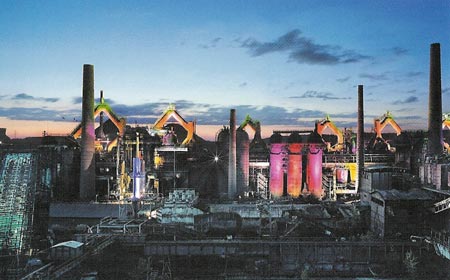
Figure 1. Voelklingen Ironworks today: a historical monument, awarded the status of a World Cultural Heritage by UNESCO.
Early history of industrial iron and steel making plant development
1881. Businessman Carl Roehling buys the non-operating facility in Voelklingen. New infrastructure improvements such as construction of the Saarbruecken-Trier railway, the construction of Saar Coal Channels and the purchase of patent rights for the Thomas steel process ensures rapid rise of the company. The Englishman Sidney Gilchrist Thomas`s invention permits the production of steel from high phosphorus minette iron-ore from Lothringen (Loraine). Minette means "minor ore", which has an iron content of only around 30%.
1883. The first blast furnace in the Voelklingen Ironworks goes into operation. It was the largest in the Saar iron and steel region with its 200 m³ capacity. The second blast furnace was started in 1885, and then the blast furnace group was completed in a quick succession, from 1888 (furnace 3) to 1907 (furnace 7).
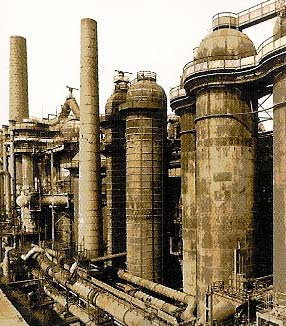
Figure 2. Voelklingen Ironworks plant outlook in the beginning of 20th century.
1897. The first coke oven battery was erected directly adjacent to the blast furnace in Voelklingen.
1900. Two years earlier experiments with the use of blast furnace gas for the driving of power engines were successfully completed: the first blast furnace gas blast engine with a power of 600 HP went into operation. Blast furnace gas itself was used for propelling internal combustion engines.
1907. The induction furnace developed by Hermann Roechling and Wilhelm Rodenhauser for the production of high quality stainless steels goes into operation.
1911. The inclined ore lift is built in Voelklingen. This was a globally unique system for supplying all blast furnaces with raw materials by using a single rail system, developed after seven years of construction work. More than 300 hoppers were in use day and night for the decades, and there was more than 6 km of tracks. However, a serious disadvantage of this system became evident much later: the blast furnaces could not be extended above 27 meters in height. Therefore, production at Voelklingen Ironworks could not keep pace with the development of the iron and steel industry in the last quarter of 20th century.
1915. The construction of Siemens-Martin steel works expands production capacity with the production of top quality stainless steels.
The blast furnace group
Blast furnace gas mains lend contour to the silhouette of the ironworks. They channeled off the gas from the six ironworks blast furnaces. The blast furnaces themselves are hidden behind scaffolding, pipes and chimneys.
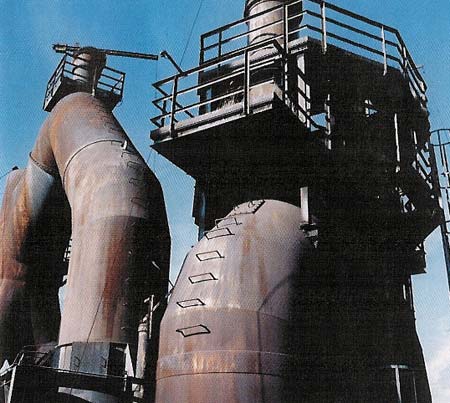
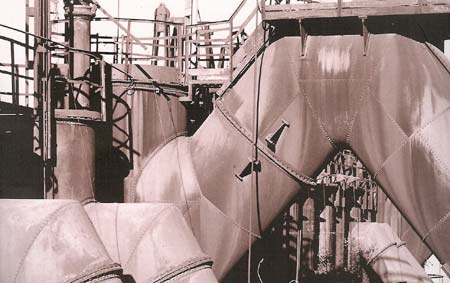
Figure 3. Blast furnace gas and wind pipes.
Some 130 tons of pig iron were tapped off in a 2 hour rhythm, or about 1100 tons per blast furnace daily. The blast wind heaters are arranged in groups of three in front of the blast furnaces. They heated the combustion air blast used for smelting iron to 1100°C. In the lower area of the furnace where glowing coke and hot air met temperatures rose up to 2000°C.
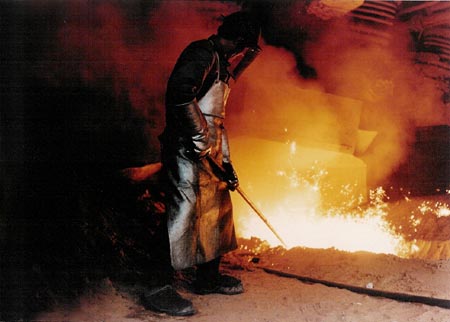
Figure 4. Tapping off iron.
The charging platform was at a height of 30 meters, and the blast furnace men filled furnaces from there, and controlled the haulage system. Giant motors drove the haulage cable pulleys, the thick steel pulled heavily loaded hoppers up to the platform. The system was controlled by a switching station located on the charging platform.
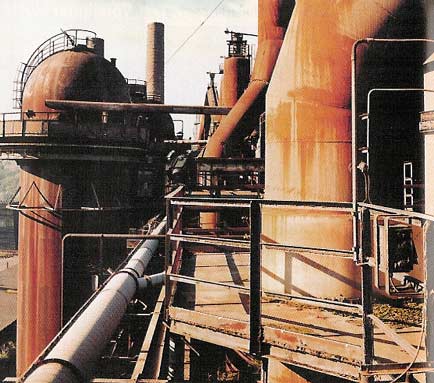
Figure 5. A section of the charging platform.
As it is well known today, the blast furnace operation needed a raw material with a high carbon content for use in the blast furnaces, in order to draw off oxygen from the iron ore and to generate heat needed for the smelting process. At that time, it became already evident that coal is unsuitable for this purpose, due to its too low caloric value and too high sulphur content. Therefore, coke plant was added to the ironworks, and the first coking ovens were lit in Voelklingen in 1897. The sheet steel silo that towers above the coking plant dates back to this period, and it is one of the oldest surviving structures of the Voelklingen Ironworks.
Another peculiarity in the vicinity of blast furnaces was the Craftman`s lane (Handwerkergasse), the ironworks building department. Bricklayers, locksmiths, carpenters and other skilled workers had their workshops there. The art of improvisation was in demand: the group of skilled workers had to be constantly ready to carry out repairs, build and make extensions.
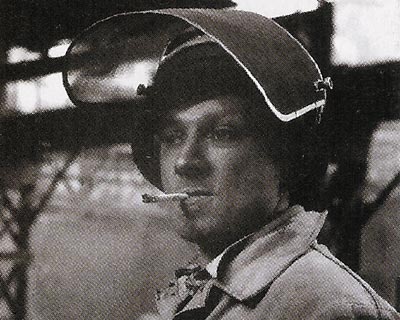
Figure 6. A tough place for work: a foundryman in 20`s.
Recycling and environment
As technology pace went forward, production of iron and steel manufacturing by-products was pushed ahead. In 1912, Voelklingen Ironworks` product range already included Thomas slag as a fertilizer, ammoniac, benzene and various tar products. The processing of waste materials from the coking plant in particular -- in the so called coal by-product operations -- proves to be important source of income for the company.
In 1927, Roechling company, the owner of Voelklingen Ironworks, built a cement works for the further processing and economic use of blast furnace slag. The waste product slag was also increasingly used in road and house building.
Approximately in the same time, sintering technology offered new opportunity to recycle waste products from the smelting process, i.e. ore dust, blast furnace dust. The largest sintering plant in the world was built in Voelklingen in 1928. Materials with a grain size that is too fine for use in the blast furnaces were heated to 1200°C to form a sinter cake in the sinter plant and then broken into the proper grain sizes.
In spite of these recycling efforts, emissions were still high, thus hampering environment. The blast furnace blew 32 tons of dust daily into the atmosphere. No one could hang laundry in the garden when wind was coming from the south-west. Every evening the people of Voelklingen had to wipe a thick layer of brown dust from their window sills.
Access Precise Properties of Cast Irons Now!
Total Materia Horizon contains property information for 11,000+ cast irons: composition, mechanical and physical properties, nonlinear properties and much more.
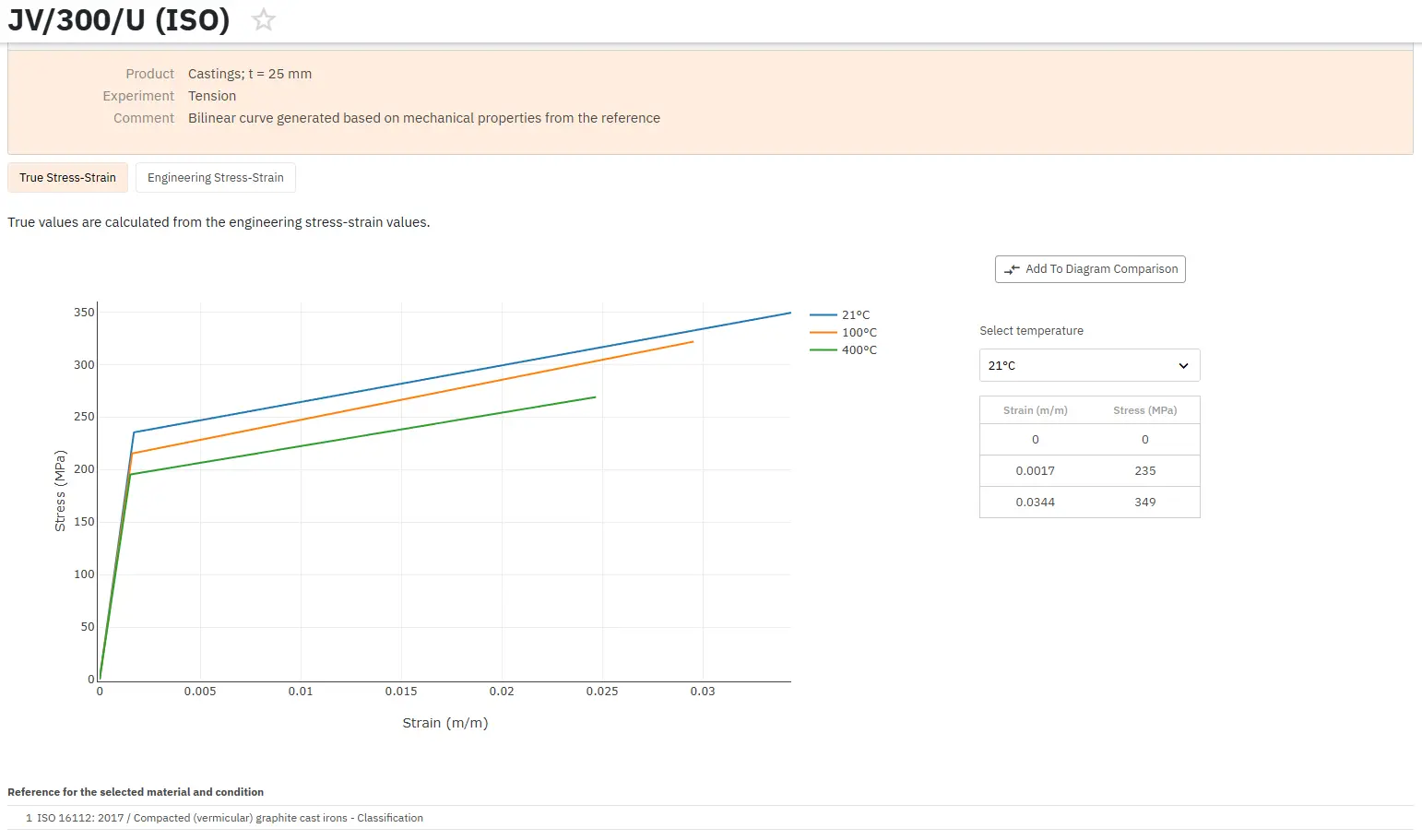
Get a FREE test account at Total Materia Horizon and join a community of over 500,000 users from more than 120 countries.